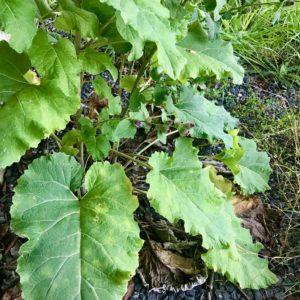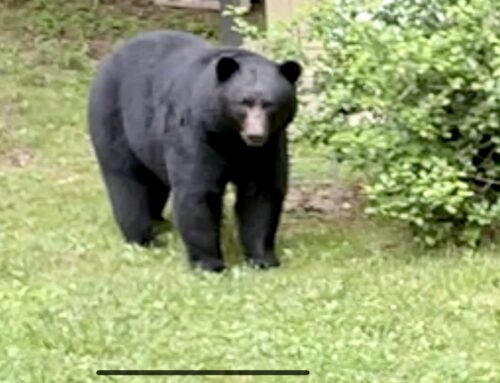Great Burdock (Arctium lappa): Edible. Medicinal. And always grows where you don’t want it to! Having antiseptic, antibacterial, and nutritive qualities, burdock is indeed an amazing wild plant! It has purple-red thistle-like flowers, and huge leaves, making it quite easy to identify.
It is used as a blood purifier, digestive stimulant, as well as a highly nutritious wild food. It can be used for skin conditions, rheumatism, diabetes…. the list literally goes on and on. The seeds, flowers, leaves, and roots all have medicinal qualities, but young roots and stems are what is the forager’s delight. …And the roots are tenacious but exquisite.
The first-year roots are considered the best for eating, although the young leaves are edible if you like bitter foods. (The second-year roots tend to be more bitter, fibrous, and woody.) Young burdock stems can also be peeled and eaten and have a milder flavor than the leaves. 
As always, positively identify plants for edible or medicinal use, as there are usually lookalikes that can be toxic or poisonous. Nightshade and Rhubarb are two plants that can be commonly confused with Burdock. (Peterson Field Guides are great books to identify what you find on your nature walks!)




